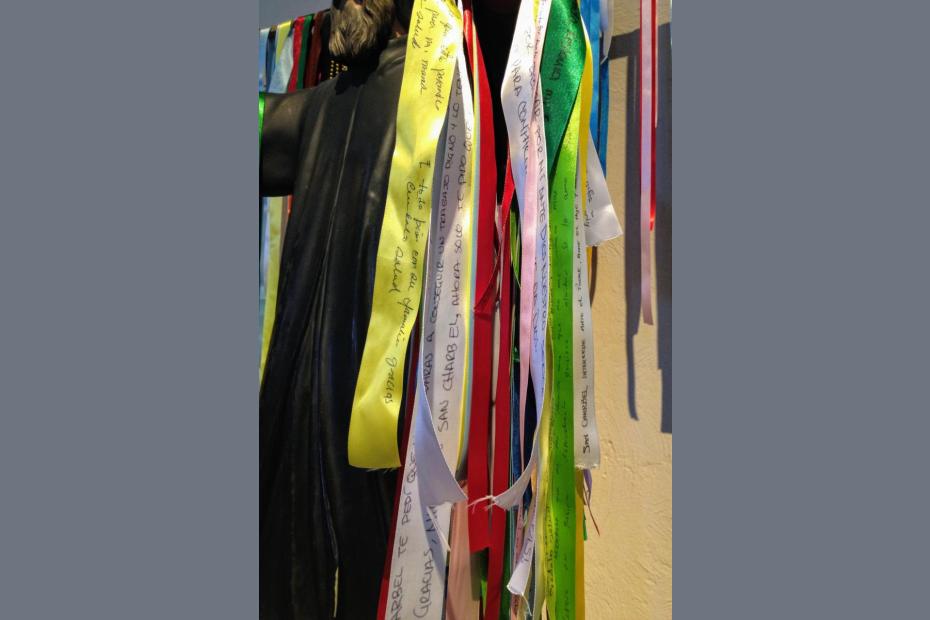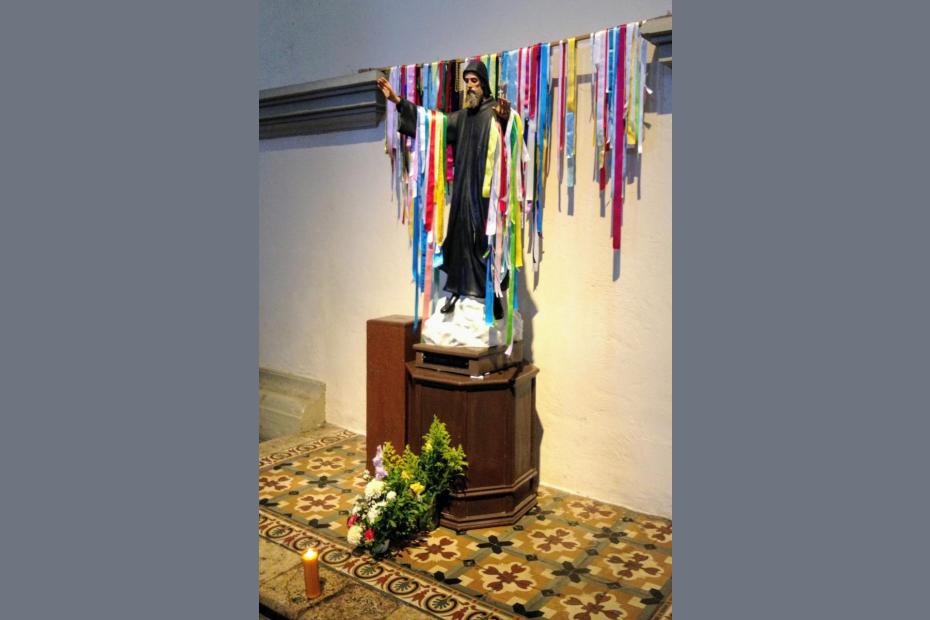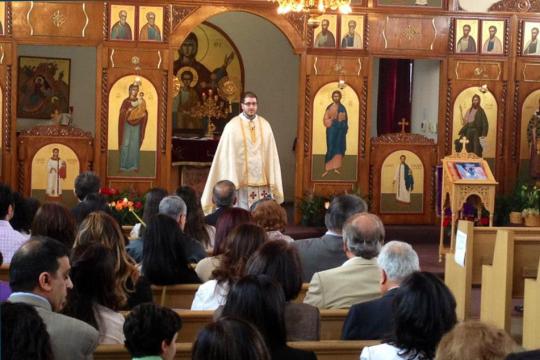As is true for Christianity in many places in the world, Lebanese Catholicism has been repeatedly shaped and reshaped by migration. Maronites likely emigrated to Mount Lebanon from modern-day Syria at least a millennium ago, as did Melkite Greek in the early 18th century. Armenian Catholics established their headquarters in Beirut because of the catastrophic genocide that displaced them from their homelands a century ago. Chaldean Catholics followed more recently from Iraq. Egyptian Coptic Catholics have migrated for work and have built an attractive church complex in Beirut.
From the late 19th century onwards, for a variety of economic reasons, large numbers of Maronite Catholics, the largest and most culturally and politically significant group of Catholics in Lebanon, have migrated from their traditional stronghold, Mount Lebanon, to coastal cities like Beirut. Others traveled much further afield, initially in large numbers to Brazil, but also throughout the Americas and the world.1 They established parishes in their new lands, or if they were too far from such parishes, integrated into other churches. Many who went abroad were traders, and some became successful merchants.2 Some returned, bringing cosmopolitan experiences to Lebanon.
In the last 50 years, few countries in the world have been so proportionately impacted by immigration as Lebanon, and its people deserve credit for managing this when neighbors were in crisis. After the founding of Israel, Lebanon absorbed a huge influx of Palestinian refugees who remain classified as refugees today, not as Lebanese citizens, living in vast camps while they hope to return to Palestine. They number up to 475,000 people. Iraqi refugees came during the war there, and have given root to a Chaldean Catholic community in Beirut and a new cathedral. The Syrian Civil War that began in 2011 sent an estimated 1.5 million refugees over the border into Lebanon, a massive influx into a country of 5 million people.3 The terrible earthquakes in Syria and Turkey in 2023 have required Lebanon to welcome a new group of refugees from neighboring countries.
The outward migration of Lebanese Christians has been at least as impactful. The catastrophic 1975-1990 Lebanese Civil War caused more than a million people—50 to 75% of whom were Christian—to leave the country.4 Some returned, but many never have.
All the Maronite Catholics interviewed in Lebanon for these articles had family or personal connections abroad—parents or grandparents who had lived abroad, family who emigrated in the face of the brutality of the Civil War, or more recently to pursue education or jobs.5 Some stories involved permanent moves, but many involved family members who had left, often for long periods, and then returned.
Large as the earlier waves of migration were, the current economic crisis, and feelings about corruption, security, and the political situation would lead to another huge migration if it were possible: a 2021 survey said that almost half of Lebanese, including 63% of 18 to 29-year-olds, would migrate if they could.6 Migration is commonly said to be a disproportionately Christian phenomenon. Given the de facto minority status of Catholics and other Christians in Lebanon, and the balance of power rooted in the confessional political system, this is always a concern to religious leaders. Continued out-migration has helped solidify Christianity’s status as a minority religion in a state originally designed to give it a majority or near-majority.
Diaspora
Lebanese Christian migration has turned the Maronite Church from being a local, geographically conscribed Church to a global one, though it serves a primarily Lebanese and Lebanese-heritage community around the world. Generations of Lebanese abroad have integrated into local Roman rite Catholic parishes, but Maronite dioceses and churches are also present in many countries.7 As of 2017, the Maronite Church estimates that it has roughly 1.25 million members in South America, 160,000 in Mexico, 150,000 in Australia, 90,000 in Canada, 79,000 in the United States, 66,000 in Nigeria and 51,000 in Europe—a total of 1.94 million Maronites abroad, about 55% of the Maronite population worldwide. Yet in the U.S., for example, Georges Labaki claims, “As few as 10% of U.S. Maronites attend Maronite churches” in part because there may not be a Maronite parish near them.8 Growth in these parishes has been dependent on migration.9
Parishes outside of Lebanon and Syria have to cope with questions about the degree to which Levantine culture is significant to Maronite or Melkite practice in the new context. Post-Vatican II liturgical reforms allow for local vernacular languages to be used in the Maronite liturgy. Georges Labaki reports, “The language of the Maronite liturgy remains the object of an intense debate in the countries of the Maronite diaspora.”10 Too much Arabic may be problematic for non-Lebanese-born worshipers, whereas translations may seem inauthentic or not conducive to prayer for migrants who are native Arabic speakers.
Guilnard Moufarrej describes similar challenges around language choices for hymns in the U.S.11 While it may be easier to remember repeated prayers in a foreign language, hymn choices in an unfamiliar language, with a different script, might prevent either group from participating. Still, she argues that the use of a variety of languages in liturgical music, adapting traditional forms, has helped unite Maronites, whose progeny feel drawn to Lebanese food and music, even if they are separated by language, since they rarely speak Arabic with any fluency.12 “First-generation immigrants argue that the chants are more ‘prayerful’ in Arabic,” she reports. “The choir director at the Cathedral of Our Lady of Lebanon in Brooklyn told me: ‘When I sing in Arabic, I pray with my heart, but when I sing in English, I pray with my lips. I understand English, and I can sing in English, but I relate more to Arabic since this is my native language.’”13
“The issue of language is less prevalent among people from third and fourth generations, for whom Arabic is not a choice,” she continues, “since many cannot understand or speak it; however, they still express interest in singing in Syriac and Arabic and appreciate that they can hear and pray in the language that Jesus spoke… [They] say that Syriac connects them with their roots, and represents divinity and sanctity… Maronite parishioners in Wheeling, West Virginia, where a church has existed since the 1920s… told me that hearing the word of consecration and some parts of the Mass in Syriac is transcendental because it sounds so sacred.”14
- 1Akram Fouad Khater, Inventing Home: Emigration, Gender, and the Middle Class in Lebanon, 1870–1920 (Berkeley: University of California Press), 53-70.
- 2On the U.S. story, see Georges Labaki, "The Maronite Church in the United States, 1854–2010." U.S. Catholic Historian 32, no. 1 (2014): 71-85.
- 3Government of Lebanon and the United Nations, “Lebanon Crisis Response Plan,” February 2021.
- 4Boutros Labaki counts 670,000 Christian and 157,000 Muslim as medium- and long-term refugees during this period, without specifying how many were externally, rather than internally, displaced. Elsewhere in the same article, he counts more than a million emigrants from Lebanon between 1979 and 1994. Emigration was mostly by Christians, he argues, but the proportions equalized over time. “Emigration…was 75% Christian in 1975, 65% Christian in 1981, and 50% Christian in 1989-90.” Boutros Labaki, “The Christian Communities and the Economic and Social Situation in Lebanon,” Christian Communities in the Arab Middle East: The Challenge of the Future, ed. Andrea Pacini (Oxford: Clarendon, 1998), 226-229, 248.
- 5The articles about Lebanon on this site are based on in-person research and conversations in several parts of Lebanon in 2014 and 2022, supplemented by the various sources cited here.
- 6Arab Barometer, Half of Lebanese Consider Migrating, April 26, 2022.
- 7Georges Labaki claims, “Most first- and second-generation Maronite [immigrants] embraced other religious affiliations, and their descendants do not identify with the Maronite Church.” Georges Labaki, "The Maronite Church in the United States,” 83.
- 8Georges Labaki, "The Maronite Church in the United States,” 84.
- 9Georges Labaki, "The Maronite Church in the United States,” 84.
- 10Georges Labaki, "The Maronite Church in the United States,” 82.
- 11Guilnard Moufarrej, “Ancient Sounds in the New World: Syro-Maronite Chant in Lebanese Maronite Communities in the United States,” Yearbook for Traditional Music (2019), 51, 107-8. doi:10.1017/ytm.2019.8
- 12Moufarrej, “Ancient Sounds in the New World,” 110, 118.
- 13Moufarrej, “Ancient Sounds in the New World,” 126.
- 14Mourarrej, “Ancient Sounds in the New World,” 126-7.



